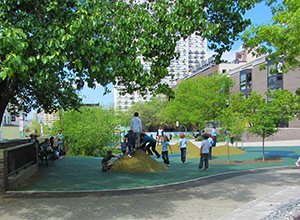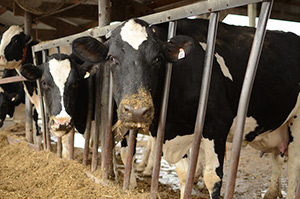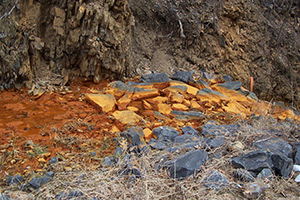Stormwater Runoff

What is it?
- Rain that flows over impermeable surfaces and into bodies of water. An impermeable surface is an area that the rain cannot permeate.
- Rain that falls on impermeable surfaces washes into streams, lakes and rivers.
- Examples of impermeable surfaces are: roads, parking lots, roofs, and sidewalks.
Stormwater runoff is created when there is over urbanization and the the natural forests are removed.
- Because the rain is not absorbed into the soil, stormwater runoff can cause flooding and erosion that can wash away important animal habitat.
- It is the number 1 impairment for streams and rivers in urban areas
- Stormwater carries in many pollutants found on roadways such as sediment, trash, pesticides, fertilizers, salt, oil, etc.
- Plant a rain garden. By planting more trees and plants, you increase the green surface area which soaks up some of the extra water
- Install rain barrels. Rain barrels are barrels that you attach to the end of your gutters. They collect the rain and allow you to use the water at a later date.
- Doing things like using limited fertilizer and pesticides, cleaning up after your pets, and cleaning up lawn clippings are great ways to help ensure different toxins do not enter the waterways the next time it rains.
- Check out you local county conservation district for more information on how you can help and for free rain barrels and plant giveaways
Agricultural Runoff

What is it?
- Water leaving a farm because of rain, irrigation, or melted snow
- When the water runs over the ground it picks up dangerous pollutants such as fertilizer, pesticides, and manure. These toxins are then carried into streams, lakes, wells and rivers.
- Can contaminate drinking water
- Can cause algae blooms. Due to the extra nitrates in the water, algae growth increases tremendously.
- Sedimentation - soil that runs off of the farms and into the water carrying different contaminates with it. Too much sediment can cause the water to cloud, which reduces the amount of sunlight to the plants in the water. Too much sediment can also clog fish gills and kill fish larvae. Soil also is a great transporter for pollutants such as fertilizers, pesticides, and heavy metals. To help decrease the amount of sediments that enter the water farmers can implement management practices that control the volume of runoff water, and try to keep the soil in place.
- Nutrients - Farmers add nutrients to their crops to better enhance their harvest. Nutrients such as phosphorus, nitrogen, and potassium are added to crops in the form of fertilizers, manures, and sludges. When the nutrients applied surpass the need of the plant, the excess nutrients wash into the streams. These excess nutrients can cause algae blooms. The excess algae strips the water of dissolved oxygen and caused fish and other wildlife to die. To help stop the issue, farmers can implement nutrient plans that dictate when, where, and how much fertilizer they put down.
- Livestock -
- Animal Waste - when farmers do not manage their facilities correctly, rain can carry manure into the water which exposes the water to many pathogens such as bacteria and viruses. To help correct the problem farmers can implement storing and managing facilities to collect the manure and distribute it when needed.
- Grazing - Overgrazing of an area will increase erosion, expose excess soil, and even introduce invasive species. To decrease the chances of overgrazing, farmers can introduce management practices such as rotational grazing.
- Irrigation - water is added to plants to prevent crops from freezing or wilting and to supplement precipitation. Too much irrigation can cause soil erosion, transportation of excess nutrients, movement of pesticides, and transportation of metals. To correct the problem, farmers need to calculate the actual amount of water each crop needs.
- Reintroduce Riparian Buffers. The addition of plants between farms and waterways provides a buffer. In many cases, the plants absorb the contaminated waters before they enter into the streams
- Nutrient Management- Applying fertilizers during the right time of year, the correct amount, and right methods will drastically decrease any pollutants that fertilizers cause.
For more information please visit:
Abandoned Mine Drainage

What is it?
- Abandoned mine drainage is water that is polluted due to contact with mine activity, that drains into rivers and streams. Most cases are caused by coal mines. It is a very common pollutant in places that were known for mining in the past.
- Acidic Mine Drainage- occurs when water runs over areas that are rich in heavy metals causing highly acidic waters. This mixture causes the formation of sulfuric acid which then interacts with rocks that contain heavy metals. The heavy metals are released and contaminate the water.
- The most common metals are iron, aluminum, and manganese. When the streams and rivers flow, these metals come in contact with oxygen, causing them to rust and leave a coating along the bottom of the river beds. This causes issues due to the fact that many aquatic animals rely on macroinvertebrates to live, and with a coating on the bottom, animals such as fish cannot reach them to eat. Many aquatic animals need to have a pH level of at least 5 to survive as well. How does it affect us?
- The Schuylkill River was one of the most utilized rivers in the industrial revolution. Coal was mined in Schuylkill County then transported down the schuylkill and to the delaware. Many of these mines have since been abandoned. The closure of these mines allows water to enter, causing contamination that affects us all.
- Tree plantings
- Cleanups
- Join Schuylkill Headwaters in their efforts to help restore the Schuylkill to its healthy, natural state by planting trees and cleaning up the watershed!
For more information please visit the websites listed below:
Over 15 billion tons of coal was removed from Pennsylvania’s ground, and 250,000 acres of mine land were left abandoned. These abandoned mines exist within the Lehigh River watershed, leaking acid, heavy metals and other pollution into nearby creeks that discharge into the Lehigh River. (This is about the Lehigh, but the basic facts are pertinent).
http://www.wildlandspa.org/environmental-stewardship/abandoned-mine-drainage
Acid mine drainage from abandoned coal mines has contaminated more than 3,000 miles of streams in Pennsylvania and it is the most extensive water-pollution problem affecting watersheds in Pennsylvania : https://www.bucknell.edu/Documents/EnvironmentalStudies/Acid_Mine_Drainage[.pdf











